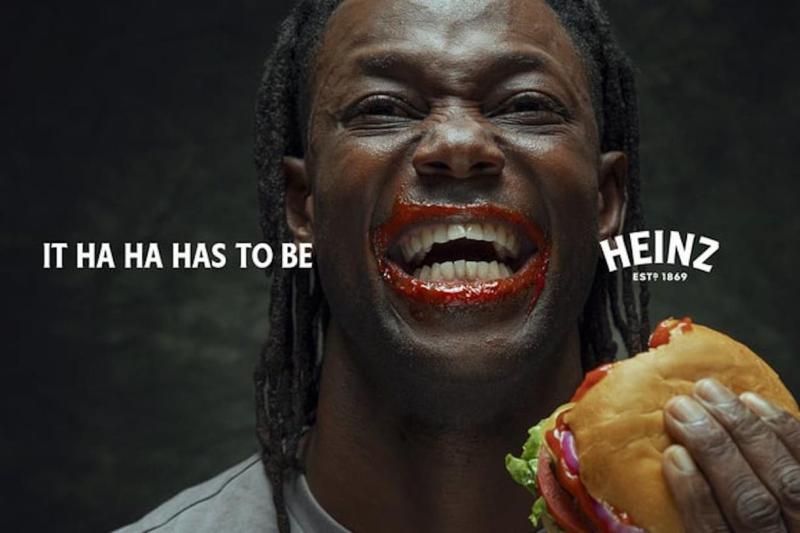By The Malketeer
Even in Malaysia, Where Sensitivities Over 3R Are Deeply Entrenched, Controversies Can Swiftly Arise from Seemingly Mundane Issues
In today’s hyper-connected world, no brand is immune to public scrutiny.
In fact, sometimes the smallest misstep can ignite a firestorm of controversy—and Heinz just found that out the hard way.
Their latest Halloween-themed advert wasn’t just an unfortunate faux pas, it was a failure in understanding cultural sensitivities and a clear reminder of the responsibilities that come with creating in a diverse world.
A Nod to Pop Culture or a Step Too Far?
Heinz’s “It Ha Ha has to be Heinz” campaign aimed to tap into the spooky season with a fun nod to the Joker film.
But what seemed playful on paper quickly turned into a PR nightmare.
The ad, which featured actors with ketchup-streaked smiles reminiscent of the Joker’s iconic grin, sparked backlash, particularly over its use of a Black actor in a way that critics say evoked uncomfortable connotations of blackface and minstrel shows.
To make matters worse, this campaign came right on the heels of another controversial Heinz ad that depicted a wedding scene with subtle yet harmful racial stereotypes.
As Nells Abbey wrote in The Guardian, the portrayal of a Black bride with no father present tapped into damaging tropes about Black families, raising questions about why brands don’t simply depict more positive representations.

The Real Damage? Cultural Ignorance
For Heinz, this isn’t just a case of bad timing.
The Halloween advert’s tone-deafness reflects a broader issue that brands continue to struggle with: not fully understanding or respecting the cultural complexities of their audiences.
According to Hai by RWS’s Krissie Petfield, “To succeed in a diverse world, brands must do more than just create. They must understand, respect, and reflect the cultural complexities of the audiences they aim to reach.”
This lesson is not new, but it remains painfully relevant.
Every image, symbol, or reference can carry a weight of history and meaning that, if misinterpreted, can lead to major fallout.
As Oliver UK’s Chief Strategy Officer, Nick Myers, pointed out, even running the ad through AI-based review tools flagged its troubling resemblance to blackface imagery.
Heinz’s failure to foresee the controversy raises the question: why weren’t more diverse voices involved in the process from the beginning?
When Culture Is Your Bread and Butter
Heinz is no stranger to navigating cultural moments—after all, their products are staples in homes around the world.
But if your bread and butter is culture, how can you afford to be so out of touch?
The truth is, marketers cannot afford to be passive in a time when culture drives brand identity and consumer loyalty.
Whether it’s hiring more diverse talent, listening to the voices that exist in the room, or just conducting thorough research, there are no excuses for failing to understand your audience.
When the stakes are this high, brands must be proactive, not reactive.
Kraft Heinz’s apology—stating that they “recognise the hurt it may have caused” — feels like a Band-Aid on a wound that should never have been inflicted in the first place.
If your campaigns aren’t vetted by diverse teams or semioticians who understand cultural sensitivities, you’re playing with fire.
The Bottom Line
Ultimately, the Heinz Halloween ad debacle is a reminder that visuals are never neutral.
Every image, every reference carries weight, and brands must tread carefully.
As we move deeper into a world where consumers demand inclusivity, representation, and respect, the responsibility falls squarely on brands to get it right—or face the consequences.
And it’s not just a Western issue.
Even in Malaysia, where sensitivities over race, religion, and cultural identity are deeply entrenched, controversies can arise from seemingly mundane issues.
A misplaced word in an ad or an offbeat cultural reference can spark nationwide debates.
Just look at the social media storms that erupt over food origins, language use, or even clothing choices.
What has come of the world when even the simplest elements of daily life can become battlegrounds for cultural misunderstandings?
For Heinz, a simple awareness of these cultural complexities could have prevented this PR disaster.
And for marketers everywhere, whether in Malaysia or elsewhere, the lesson is clear: we live in a time when even the smallest oversight can feel like a betrayal to consumers.
If culture is the name of the game, then brands need to play to win—and that means listening, learning, and respecting the diverse world they aim to reach.
Let’s not forget: in today’s world, it’s not just about selling a product.
It’s about selling a message.
And brands that fail to understand their audience will find that message lost in translation.
MARKETING Magazine is not responsible for the content of external sites.
An afternoon of conversations we never had, with leaders most of you never met.
Discover what’s possible from those who made it possible. Plus a preview of The HAM Agency Rankings REPORT 2024.
Limited seats: [email protected]
BOOK SEATS NOW









